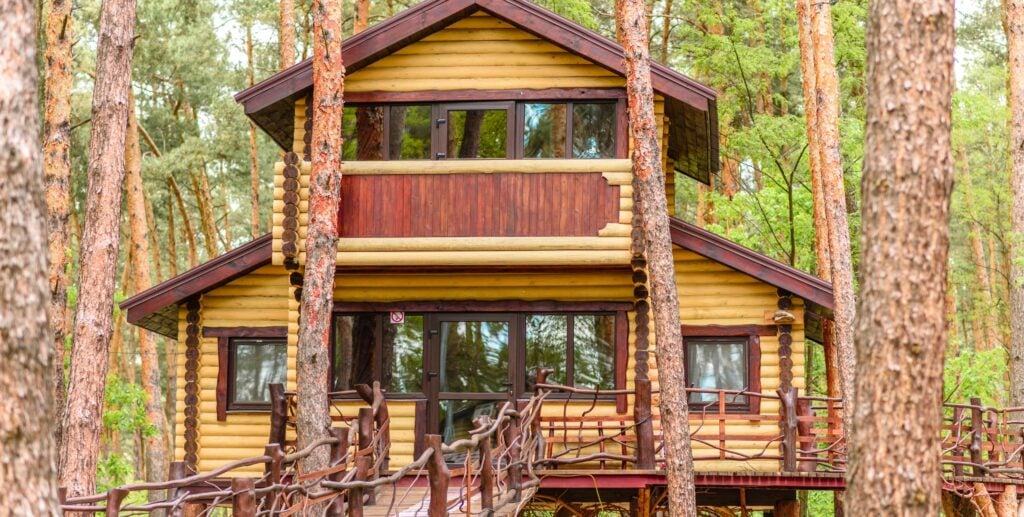Forget the traditional home inspection; a new era of property surveillance is unfolding above Australian suburbs, with significant implications for homeowners and prospective buyers. Insurance companies are increasingly deploying drones and other aerial technologies to scrutinise properties from above, assessing everything from roof integrity to proximity to bushfire risks.
The ‘eyes in the sky’ approach is not just about faster claims processing; it’s fundamentally reshaping how homes are valued, insured, and even sold across the nation.
Across the globe, insurers are leveraging airborne cameras to photograph individual houses, primarily to inspect buildings after extreme weather events such as hailstorms or bushfires. However, a more concerning trend for property owners is the use of these images to determine which homes are deemed too risky to insure, or to justify policy changes and non-renewals.
Across the globe, insurers are leveraging airborne cameras to photograph individual houses.
This includes the United States where drones are routinely used to inspect buildings after extreme weather events, such as hurricanes or hailstorms.
Crucially, they also utilise these images to determine which homes are deemed too risky to insure, or to justify policy changes and non-renewals.
MORE NEWS
Council cracks down on housing construction
$120k sacrifice for son ends in betrayal
Aus man’s family home on brink of collapse
Insurance companies are increasingly deploying drones and other aerial technologies to scrutinise properties from above, assessing everything from roof integrity to proximity to bushfire risks. .
For instance, a proposed bill in California, a state frequently impacted by earthquakes and wildfires, aims to require insurers to notify policyholders if aerial photos could be taken and to provide consumers with copies of these images.
This legislative push comes amid concerns from homeowners who have been “blindsided by insurance policy non-renewals,” often based on aerial images they argue are “inaccurate or misleading.”
Companies like Near Space Labs, a New York-based start-up, are at the forefront of this technology, using stratospheric balloons to capture vast amounts of aerial imagery quickly.
Closer to home, the technological shift is rapidly gaining momentum.
News from early 2024 confirms that Australian insurance companies are increasingly utilising drones for property checks, encompassing both routine inspections and comprehensive risk assessments.
This can, and often does, lead to policy adjustments or even denials for homeowners whose properties exhibit conditions deemed high-risk, such as poorly maintained roofs or inadequate insulation.
MORE NEWS: Aus‘s worst suburbs for mould crisis mapped
The ‘eyes in the sky’ approach is not just about faster claims processing; it’s fundamentally reshaping how homes are valued, insured, and even sold across the globe.
The detailed, high-resolution imagery and 3D models provided by drones offer insurers a safer and more efficient method to assess damage following natural disasters like bushfires or floods.
It also allows them to identify maintenance issues that could indicate a higher risk profile.
For instance, insurer IAG pioneered the use of drones in 2016 to assess damage from devastating bushfires in the Great Ocean Road area, significantly fast-tracking the claims assessment process for affected customers.
This technology enabled them to inspect properties before physical access was granted by authorities, allowing for immediate processing of claims.
The aerial imagery also provided a safe way for both assessors and customers to review damage, mitigating risks associated with physical site visits, such as asbestos exposure or fallen power lines.
MORE NEWS: Fresh blow for stubborn Aus neighbours
Italian firefighters use a drone as they search damaged houses in San Lorenzo, near the Italian village of Amatrice, three days after a 6.2-magnitude earthquake struck the region.
Companies like Measure Australia are at the forefront of providing these drone data gathering services to the insurance industry.
They create detailed 3D models of infrastructure, which are used to improve claims management, expedite compensation, and provide accurate documentation to mitigate fraud. Measure Australia, via their website, highlights that their data can be used to check the initial state of a property and its condition after a reported incident, offering a more precise and cost-effective way to assess damaged areas.
While insurers argue that aerial photography is less intrusive than traditional home visits and helps them respond faster to disasters, the implications for the Australian property market are profound.
Impact on property values and affordability
If a property in Australia is deemed too risky to insure, or if its insurance premiums become prohibitively expensive, its market value can plummet.
This is particularly true for homes in areas prone to natural disasters, such as bushfire-prone zones or flood plains.
As some insurers withdraw from high-risk regions or significantly increase premiums, it creates a two-tiered market where some properties become less attractive or even unsaleable due to insurance challenges.
Drone operator Will Andre launches a hexacopter camera drone as it flies over houses burnt by bushfire at Winmalee, in the Blue Mountains, west of Sydney, in 2013.
Transparency and consumer rights
The use of aerial imagery raises significant questions about transparency for Australian homeowners.
Many are unaware their properties are being photographed, and they often lack easy access to these images, which are used to make critical decisions about their policies.
The experience in the US, where legislation is being proposed to mandate insurer notification and provide homeowners with copies of these images, highlights a growing need for similar consumer protections in Australia.
Homeowners should have the right to challenge assessments based on potentially outdated or inaccurate imagery, providing proof of recent repairs or improvements.
Still from aerial footage shot with a mikrokopter (drone) of the aftermath of the devastating bushfires over Buena Vista and Single Ridge Roads, Winmalee in 2013.
Maintenance becomes paramount
The detailed scrutiny offered by drones means that seemingly minor maintenance issues, such as a few loose tiles on a roof or overgrown vegetation near a dwelling, can now be easily identified and flagged by Australian insurers.
This places a greater onus on homeowners to maintain their properties meticulously, not just for aesthetic reasons, but for insurability.
A poorly maintained home could directly translate to higher premiums or even a refusal to insure, impacting its desirability in the market.
Ultimately, the ‘eyes in the sky’ are here to stay. For Australian homeowners and those looking to enter the property market, understanding the implications of this aerial surveillance is no longer optional.
It’s a critical factor that will increasingly influence property values, insurance costs, and the very viability of owning a home in certain locations across our vast continent.



















 English (US) ·
English (US) ·